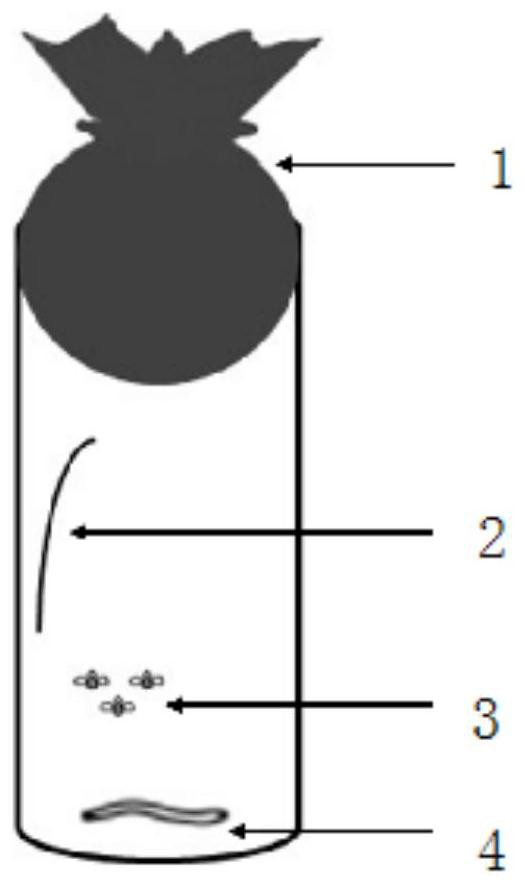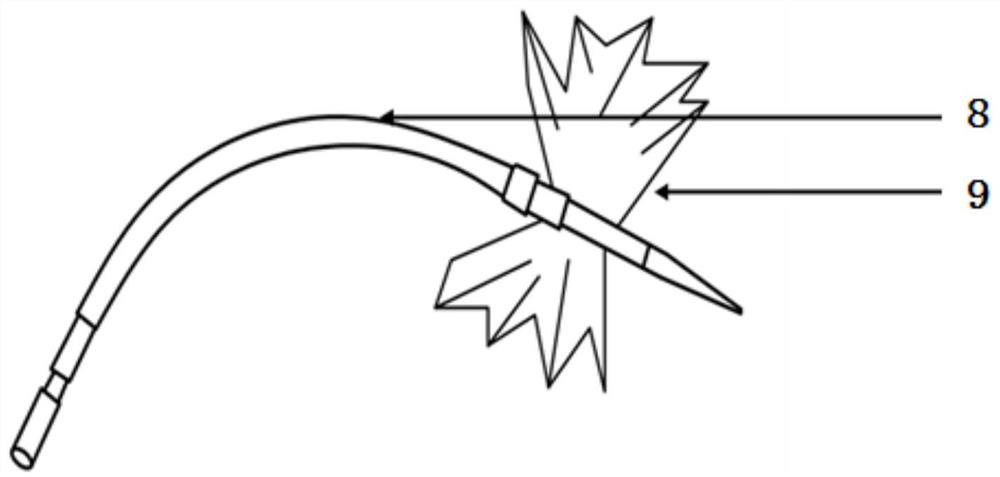Indoor breeding method of cotesia chilonis
A technology of Chilo borer plate and velvet wasp, which is applied in animal husbandry and other fields
- Summary
- Abstract
- Description
- Claims
- Application Information
AI Technical Summary
Problems solved by technology
Method used
Image
Examples
Embodiment 1
[0020] The indoor breeding method of the rice stem borer described in the present embodiment comprises the following steps:
[0021] (1) Place the existing cocoons of the Chilo borer wasps in a test tube of 22*74mm size, place a single cocoon produced by the parasitic Chilo borer in each test tube and seal it with a plug 1, and place it side by side Raised under the indoor environmental conditions of light-to-dark ratio 16:8, temperature 27±1°C, humidity 75%, and light intensity 1200 lux, the bees of Chilo suppressalis usually emerge in the early morning. After the bee emerges, use a self-made fluke tube (such as image 3 ) inhale a total of three adult worms 3 of Chilo stem borer with a ratio of 2:1 between male and female, and inhale them into a parasitic test tube with a single head of 4-5 instars 4 and a specification of 22*74mm, Use a cotton thread 2 of about 3 cm to dip the honey water with a concentration of 10% and place it on the wall of the glass tube as supplementa...
Embodiment 2
[0027] Confirmation of the ratio of sexes to males and females in the present invention:
[0028] In order to explore the most suitable parasitic sex ratio of Braconidia officinalis, the present invention has explored the parasitic characteristics of Braconidia officinalis on different sex ratios, and the feeding method refers to Example 1. The male-to-female ratios of braconids were 1:1, 2:1, and 5:3, respectively, and each male-to-female ratio experiment parasitized 50 C. suppressalis larvae, and the age of C. suppressalis larvae was 5 instars. The specific data are shown in Table 1 and Table 2:
[0029] Table 1 The death and cocooning situation of different populations of Chilo borer parasitized by Braconidia chinensis with different sex ratios
[0030]
[0031] Table 2 The emergence of bees with different male and female ratios of Chilo suppressalis
[0032]
[0033]
[0034] It can be seen from Table 1 and Table 2 that among the parasitic results of Braconidia ...
PUM
 Login to View More
Login to View More Abstract
Description
Claims
Application Information
 Login to View More
Login to View More - R&D
- Intellectual Property
- Life Sciences
- Materials
- Tech Scout
- Unparalleled Data Quality
- Higher Quality Content
- 60% Fewer Hallucinations
Browse by: Latest US Patents, China's latest patents, Technical Efficacy Thesaurus, Application Domain, Technology Topic, Popular Technical Reports.
© 2025 PatSnap. All rights reserved.Legal|Privacy policy|Modern Slavery Act Transparency Statement|Sitemap|About US| Contact US: help@patsnap.com



